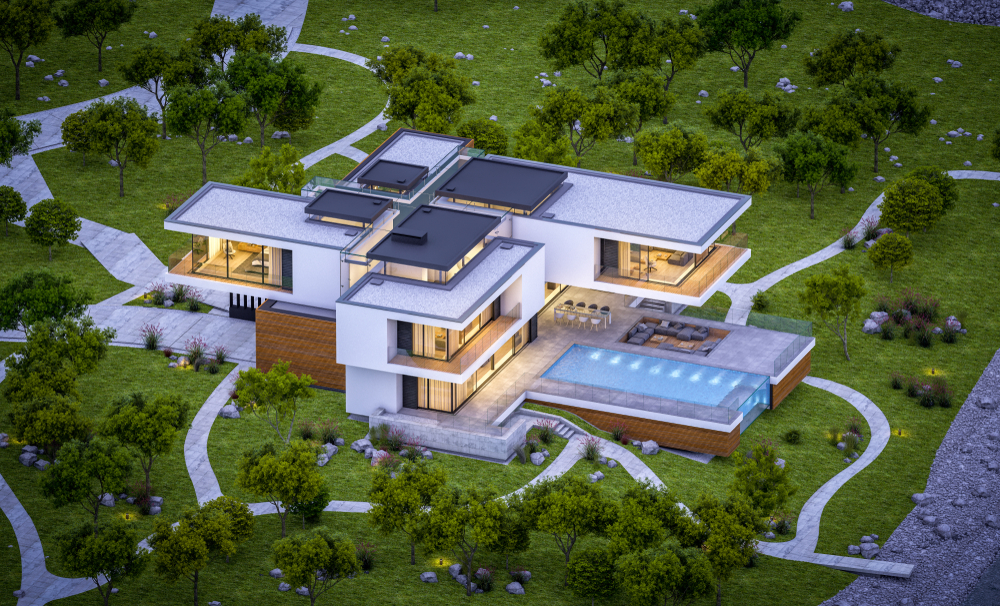Have you ever marveled at how a simple sketch turns into a breathtaking skyscraper? Or how a mere concept evolves into a tangible structure? This magic, often unseen yet pivotal, is largely thanks to architectural rendering services. Let’s dive into how these services are revolutionizing the architectural industry by transforming blueprints into stunning visual realities.
The Essence of 3D Architectural Renderings
At its core, 3D architectural rendering is an art form – it’s about bringing a project’s vision to life before the first brick is laid. It involves creating photorealistic 3D renderings of buildings, providing a tangible representation of what’s otherwise trapped in an architect’s mind or flat on a blueprint. These renderings are not just pictures; they’re a powerful communication tool between architects, clients, and stakeholders.
Interior and Exterior Renderings – The Dual Pivots
Interior renderings provide a glimpse into the future, showcasing everything from the layout to the materials and textures used within a space. On the flip side, exterior rendered images give a comprehensive view of the building’s facade, blending it seamlessly with its surroundings. Both types of renderings are crucial in ensuring that the final structure aligns with the client’s expectations and needs.
The Role of Rendering Software in Architecture
To create these visual wonders, architects rely on advanced rendering software. Tools like 3DS Max, Corona Renderer, and Autodesk Revit have become staples in the industry. These programs allow for the creation of detailed, photorealistic images, offering a preview of how projects will look upon completion. The choice of software often depends on the project’s specific needs and the architectural firm’s preference.
Navigating the Learning Curve
While these tools are powerful, they come with a learning curve. Mastery of rendering software for architecture is a skill that develops over time, blending technical prowess with artistic sensibility. The right software can make a significant difference, offering a rendering solution that best fits the project’s scale and complexity.
Benefits of Architectural Rendering in Design and Planning
One of the key benefits of architectural rendering is its role in the design process. It allows architects and designers to experiment with different concepts, materials, and layouts before finalizing their plans. Furthermore, these renderings can be pivotal during client presentations, visually communicating the envisioned outcome more effectively than any verbal description could.
From Site Plans to 3D Virtual Tours
Architectural renderings are not just static images. They extend to creating 3D floor plans, virtual staging, and even full-blown 3D virtual tours, offering an immersive experience of the proposed design. This holistic approach ensures that every aspect of a building, from the landscape architecture to the interior design, is carefully considered and beautifully presented.
The Impact on Client Relations and Project Approval
The use of 3D architectural rendering software has revolutionized client interactions in the architectural industry. By presenting photorealistic 3d renderings, architects can set realistic expectations and build trust with their clients. This visual clarity often leads to quicker project approvals and fewer revisions, saving both time and resources.
Choosing the Right Rendering Techniques and Styles
The architectural 3D rendering process involves choosing the right techniques and styles to best showcase the project. This could range from aerial renderings for a bird’s-eye view of the site to detailed photorealistic 3D images that highlight the project’s finer details. The choice of rendering technique can greatly influence how the final project is perceived.
Conclusion
In conclusion, rendering services in architecture are more than just a step in the design process; they are a bridge between imagination and reality. They allow architects to explore and refine their designs, facilitate clear communication with clients, and ultimately contribute to creating structures that are both functional and aesthetically pleasing. As technology continues to advance, the possibilities in architectural visualization seem limitless, promising even more exciting developments in the future.
FAQs
What is the main purpose of architectural renderings?
Architectural renderings primarily serve to visually communicate design concepts, helping clients and stakeholders understand and visualize the proposed project before construction begins.
How have rendering services changed the architectural design process?
Rendering services have revolutionized the architectural design process by allowing for more experimentation, clearer client communication, and a more efficient project approval process.
What are some popular architectural rendering software?
Popular architectural rendering software includes 3DS Max, Corona Renderer, Autodesk Revit, and Cinema 4D, each offering unique features and rendering capabilities.
Can rendering services be used for both interior and exterior design?
Yes, rendering services are versatile and can be used to create both interior visualizations and exterior rendered images, providing a comprehensive view of a project.
Are photorealistic renderings important in client presentations?
Absolutely. Photorealistic renderings play a crucial role in client presentations, as they help in setting realistic expectations and aid in the decision-making process.


